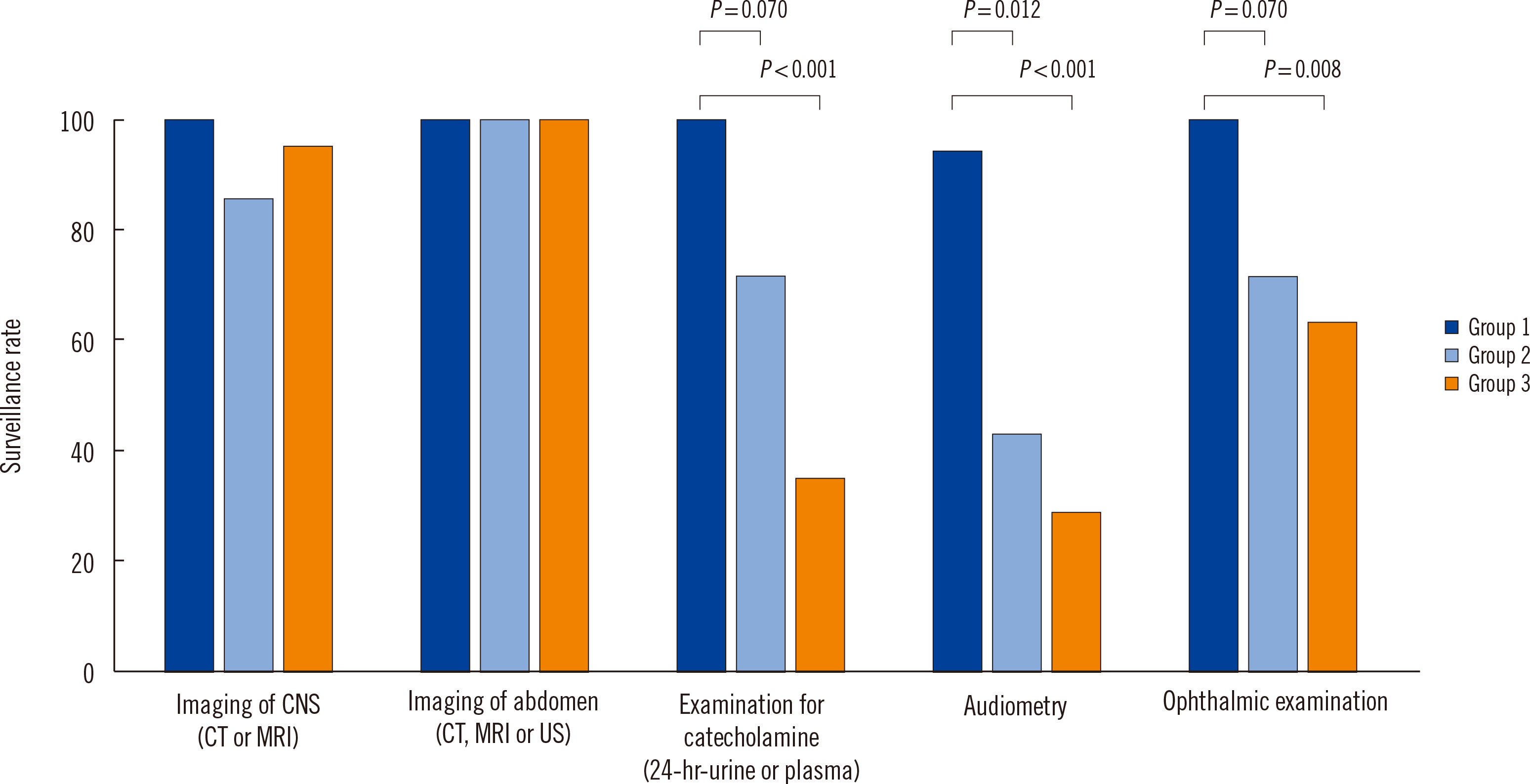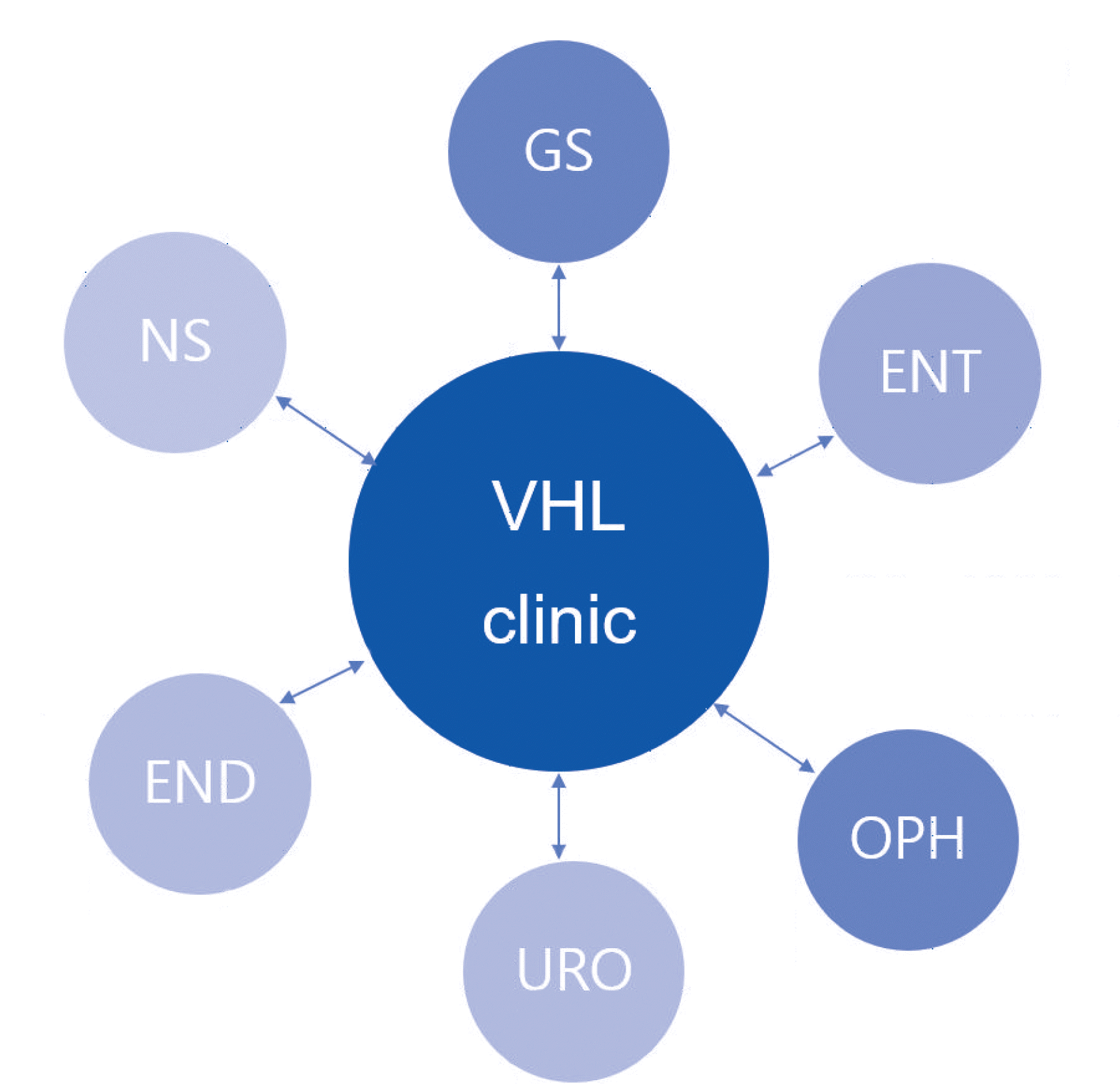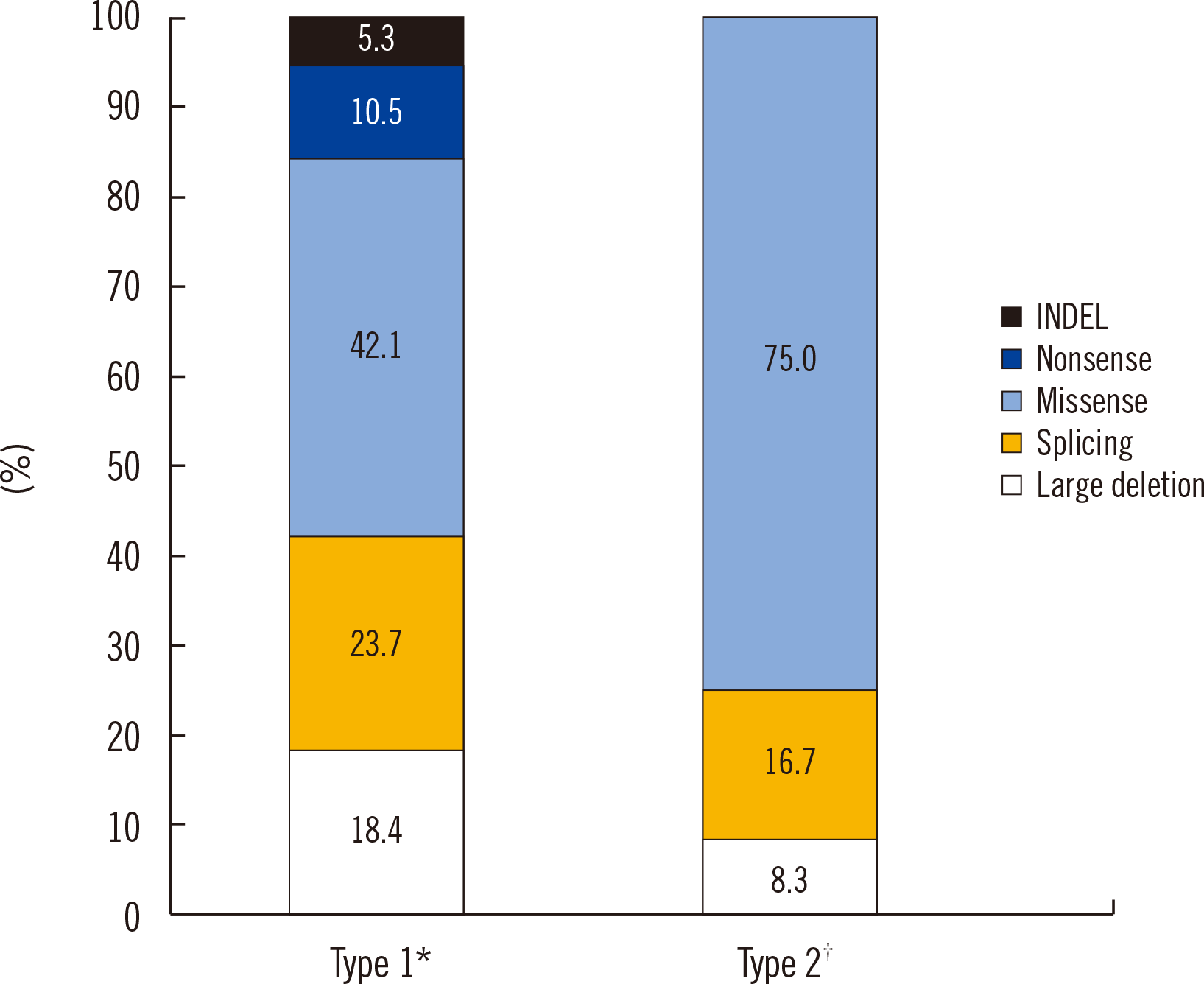2. Kamura T, Koepp DM, Conrad MN, Skowyra D, Moreland RJ, Iliopoulos O, et al. 1999; Rbx1, a component of the VHL tumor suppressor complex and SCF ubiquitin ligase. Science. 284:657–61. DOI:
10.1126/science.284.5414.657. PMID:
10213691.

3. Maxwell PH, Wiesener MS, Chang GW, Clifford SC, Vaux EC, Cockman ME, et al. 1999; The tumour suppressor protein VHL targets hypoxia-inducible factors for oxygen-dependent proteolysis. Nature. 399:271–5. DOI:
10.1038/20459. PMID:
10353251.

4. Maher ER, Webster AR, Richards FM, Green JS, Crossey PA, Payne SJ, et al. 1996; Phenotypic expression in von Hippel-Lindau disease: correlations with germline VHL gene mutations. J Med Genet. 33:328–32. DOI:
10.1136/jmg.33.4.328. PMID:
8730290. PMCID:
PMC1050584.

5. Varshney N, Kebede AA, Owusu-Dapaah H, Lather J, Kaushik M, Bhullar JS. 2017; A Review of Von Hippel-Lindau Syndrome. J Kidney Cancer VHL. 4:20–9. DOI:
10.15586/jkcvhl.2017.88. PMID:
28785532. PMCID:
PMC5541202.

6. Wilding A, Ingham SL, Lalloo F, Clancy T, Huson SM, Moran A, et al. 2012; Life expectancy in hereditary cancer predisposing diseases: an observational study. J Med Genet. 49:264–9. DOI:
10.1136/jmedgenet-2011-100562. PMID:
22362873.

7. Binderup MLM. von Hippel-Lindau disease: Diagnosis and factors influencing disease outcome. Dan Med J. 2018; 65. PMID:
29510814.
8. Dornbos D 3rd, Kim HJ, Butman JA, Lonser RR. 2018; Review of the Neurological Implications of von Hippel-Lindau Disease. JAMA Neurol. 75:620–7. DOI:
10.1001/jamaneurol.2017.4469. PMID:
29379961.

11. Schunemann V, Huntoon K, Lonser RR. 2016; Personalized Medicine for Nervous System Manifestations of von Hippel-Lindau Disease. Front Surg. 3:39. DOI:
10.3389/fsurg.2016.00039. PMID:
27446927. PMCID:
PMC4928600.

12. Yang C, Huntoon K, Ksendzovsky A, Zhuang Z, Lonser RR. 2013; Proteostasis modulators prolong missense VHL protein activity and halt tumor progression. Cell Rep. 3:52–9. DOI:
10.1016/j.celrep.2012.12.007. PMID:
23318261. PMCID:
PMC3563731.

13. alliance V. VHLA Suggested Active Surveillance Guidelines 2020.
14. Binderup ML, Galanakis M, Budtz-Jorgensen E, Kosteljanetz M, Luise Bisgaard M. 2017; Prevalence, birth incidence, and penetrance of von Hippel-Lindau disease (vHL) in Denmark. Eur J Hum Genet. 25:301–7. DOI:
10.1038/ejhg.2016.173. PMID:
27966541. PMCID:
PMC5315510.

16. Nielsen SM, Rhodes L, Blanco I, Chung WK, Eng C, Maher ER, et al. 2016; Von Hippel-Lindau Disease: Genetics and Role of Genetic Counseling in a Multiple Neoplasia Syndrome. J Clin Oncol. 34:2172–81. DOI:
10.1200/JCO.2015.65.6140. PMID:
27114602.

17. Richards S, Aziz N, Bale S, Bick D, Das S, Gastier-Foster J, et al. 2015; Standards and guidelines for the interpretation of sequence variants: a joint consensus recommendation of the American College of Medical Genetics and Genomics and the Association for Molecular Pathology. Genet Med. 17:405–24. DOI:
10.1038/gim.2015.30. PMID:
25741868. PMCID:
PMC4544753.

18. Cho HJ, Ki CS, Kim JW. 2009; Improved detection of germline mutations in Korean VHL patients by multiple ligation-dependent probe amplification analysis. J Korean Med Sci. 24:77–83. DOI:
10.3346/jkms.2009.24.1.77. PMID:
19270817. PMCID:
PMC2650969.

19. Hwang S, Ku CR, Lee JI, Hur KY, Lee MS, Lee CH, et al. 2014; Germline mutation of Glu70Lys is highly frequent in Korean patients with von Hippel-Lindau (VHL) disease. J Hum Genet. 59:488–93. DOI:
10.1038/jhg.2014.61. PMID:
25078357.

20. Ahn HS, Kim HJ, Kim KH, Lee YS, Han SJ, Kim Y, et al. 2016; Thyroid Cancer Screening in South Korea Increases Detection of Papillary Cancers with No Impact on Other Subtypes or Thyroid Cancer Mortality. Thyroid. 26:1535–40. DOI:
10.1089/thy.2016.0075. PMID:
27627550.

21. Wu P, Zhang N, Wang X, Ning X, Li T, Bu D, et al. 2012; Family history of von Hippel-Lindau disease was uncommon in Chinese patients: suggesting the higher frequency of de novo mutations in VHL gene in these patients. J Hum Genet. 57:238–43. DOI:
10.1038/jhg.2012.10. PMID:
22357542.

22. Binderup ML, Bisgaard ML, Harbud V, Moller HU, Gimsing S, Friis-Hansen L, et al. 2013; Von Hippel-Lindau disease (vHL). National clinical guideline for diagnosis and surveillance in Denmark. 3rd edition. Dan Med J. 60:B4763. PMID:
24355456.
23. Launbjerg K, Bache I, Galanakis M, Bisgaard ML, Binderup MLM. 2017; von Hippel-Lindau development in children and adolescents. Am J Med Genet A. 173:2381–94. DOI:
10.1002/ajmg.a.38324. PMID:
28650583.






 PDF
PDF Citation
Citation Print
Print





 XML Download
XML Download